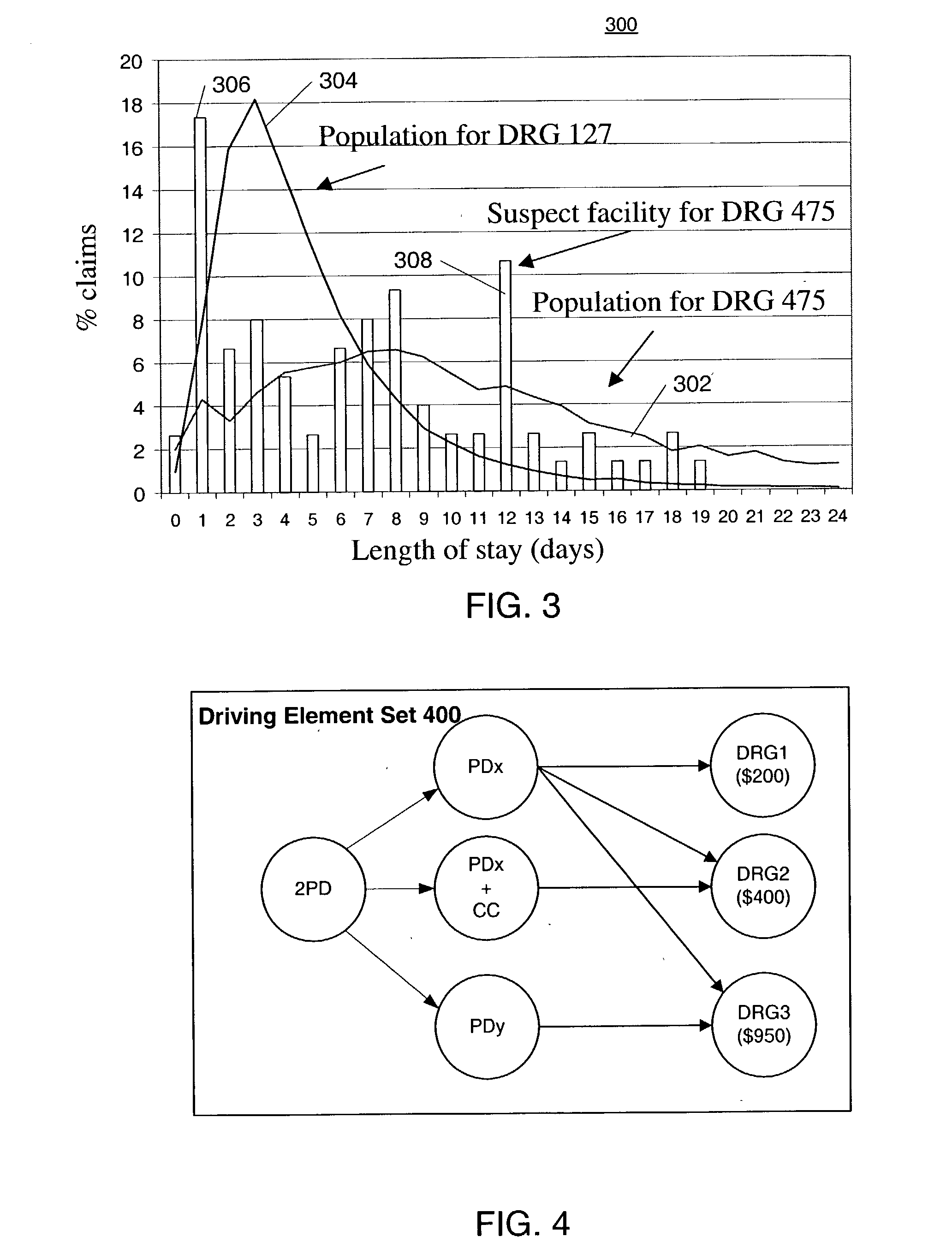Fraud and abuse detection and entity profiling in hierarchical coded payment systems
a hierarchical coded payment system and fraud detection technology, applied in the field of fraud or abuse detection and entity profiling in hierarchical coded payment systems, can solve the problems of significant percentage paid on fraudulent or abusive claims, the amount lost to health care fraud and abuse cannot be quantified, and the amount of medicare payments is approximately 14 percent (about $23.2 billion)
- Summary
- Abstract
- Description
- Claims
- Application Information
AI Technical Summary
Benefits of technology
Problems solved by technology
Method used
Image
Examples
Embodiment Construction
: Activity Example: Activity clients in each across elements across groups within a across categories realization) within a group (say, category (say, across across Principal Diags DRGs within an within a DRG) MDC) Example 2: Activity Example 2: Activity across all elements across all groups across all groups across all categories Proportion of counts Within Across Within in group pairs Example: Proportion Example: Proportion Example: Proportion of more expensive of more expensive of more expensive group in pair with group in pair done group in all possible upcoding potential across all possible pairs of groups based on driving group pairs obtained from elements category Time (length of Within Within Within stay / treatment etc.) Example: Average Example: Average Example: Average length of clients' stay length of clients' stay length of clients' stay across claims for the across claims for the across claims for the driving element group category Group Weight Within Within (relative co...
PUM
 Login to View More
Login to View More Abstract
Description
Claims
Application Information
 Login to View More
Login to View More - R&D
- Intellectual Property
- Life Sciences
- Materials
- Tech Scout
- Unparalleled Data Quality
- Higher Quality Content
- 60% Fewer Hallucinations
Browse by: Latest US Patents, China's latest patents, Technical Efficacy Thesaurus, Application Domain, Technology Topic, Popular Technical Reports.
© 2025 PatSnap. All rights reserved.Legal|Privacy policy|Modern Slavery Act Transparency Statement|Sitemap|About US| Contact US: help@patsnap.com



